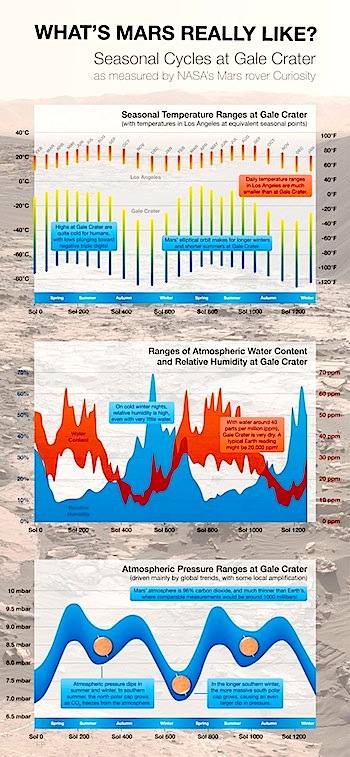 NASA’s Curiosity Mars rover today completes its second Martian year since landing inside Gale Crater nearly four Earth years ago, which means it has recorded environmental patterns through two full cycles of Martian seasons.
NASA’s Curiosity Mars rover today completes its second Martian year since landing inside Gale Crater nearly four Earth years ago, which means it has recorded environmental patterns through two full cycles of Martian seasons.
The repetition helps distinguish seasonal effects from sporadic events. For example, a large spike in methane in the local atmosphere during the first southern-hemisphere autumn in Gale Crater was not repeated the second autumn. It was an episodic release, still unexplained.
However, the rover’s measurements do suggest that much subtler changes in the background methane concentration — amounts much less than during the spike — may follow a seasonal pattern.
Measurements of temperature, pressure, ultraviolet light reaching the surface and the scant water vapor in the air at Gale Crater show strong, repeated seasonal changes.
Monitoring the modern atmosphere, weather and climate fulfills a Curiosity mission goal supplementing the better-known investigations of conditions billions of years ago. Back then, Gale Crater had lakes and groundwater that could have been good habitats for microbes, if Mars has ever had any. Today, though dry and much less hospitable, environmental factors are still dynamic. [More at link]








